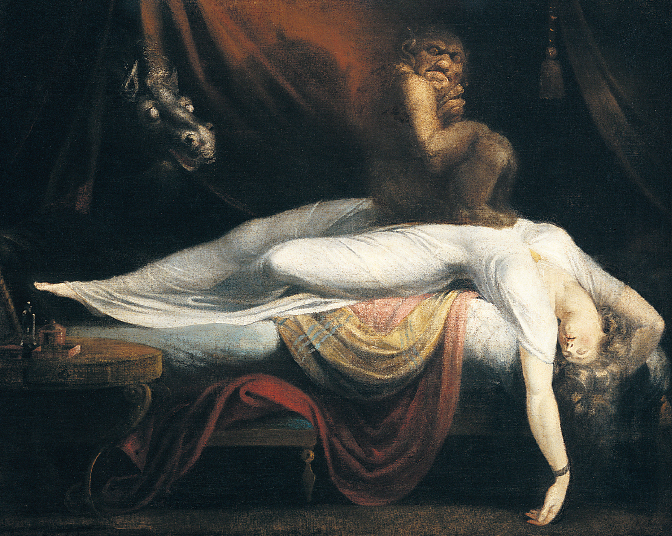Music and the Supernatural
The supernatural — often linked to the bizarre or macabre — loomed large in the Romantic firmament, as we might expect of a movement so intent on transcending the ordinary. In Nightmare, a weird picture by the early Romantic painter Henry Fuseli, dream is made concrete, visible, and public in the figure of a horrible ogre (see below). The magician Faust pledging his soul to the Devil for a single moment of transcendent happiness became the subject of the greatest poem of the time, Goethe’s Faust. Franz Schubert wrote “The Erlking,” about a demon who claims a terrified child, in 1815 (see page 234); Mary Shelley wrote Frankenstein in 1818. The titles of some of the most famous operas of the time — Robert the Devil, The Vampire, The Magic Bullet — speak for themselves.
In music, the new freedoms aided this aspect of Romanticism. Composers cultivated strange harmonies and sinister orchestral sounds that can still be heard for special effect on video and movie soundtracks today. A famous scene of devilish conjuration in a deep forest, the Wolf’s Glen scene in Carl Maria von Weber’s opera Der Freischütz (The Magic Bullet, 1821), was an early monument to Romanticism in music (see page 256). Spooky music was devised by Verdi for the witches in his Shakespeare opera Macbeth, and by Wagner for the ghost ship and its crew in The Flying Dutchman. And in his Fantastic Symphony, as we shall see (page 249), Hector Berlioz wrote a movement called “Dream of a Witches’ Sabbath” that bears comparison with Fuseli’s Nightmare.
